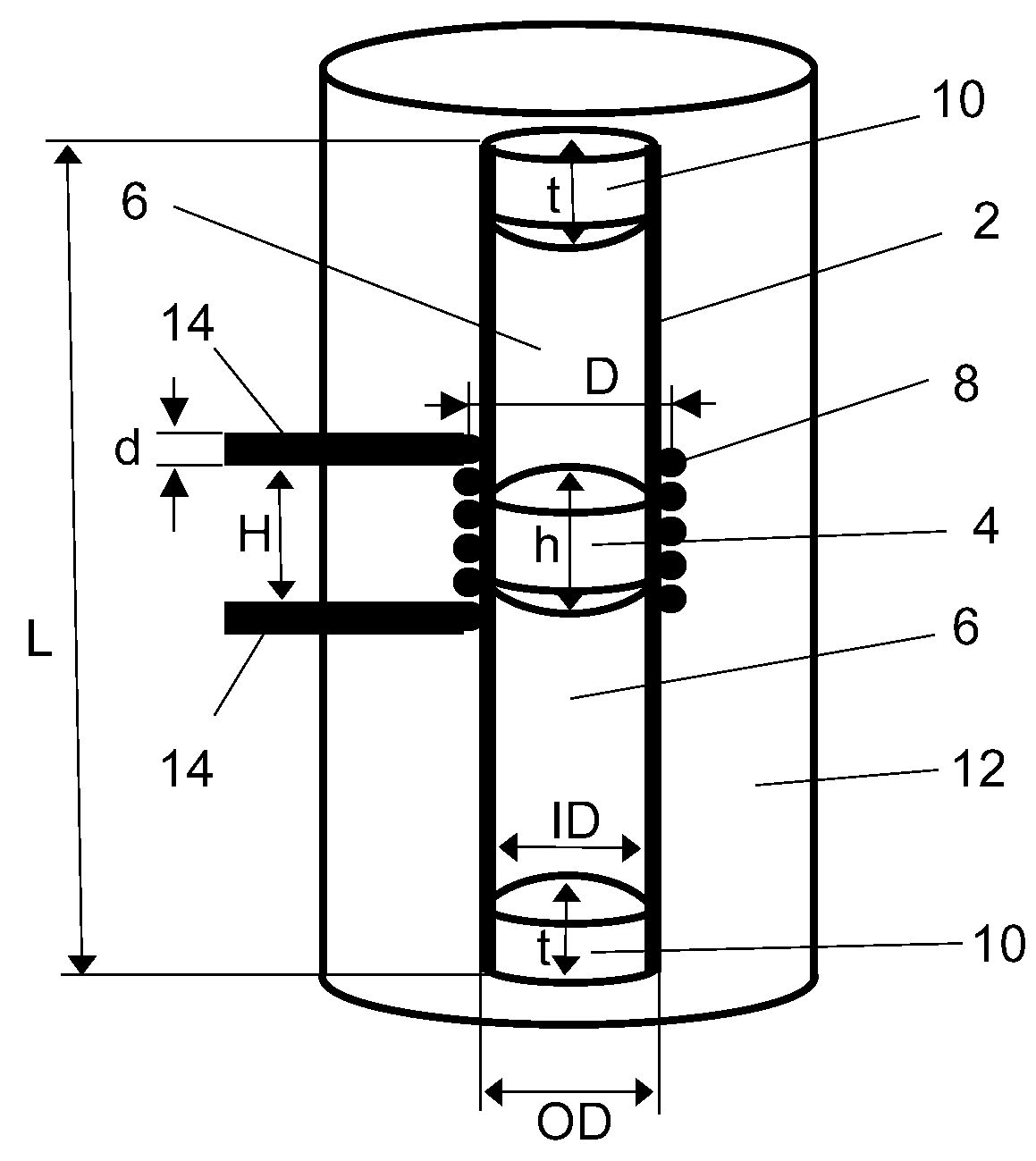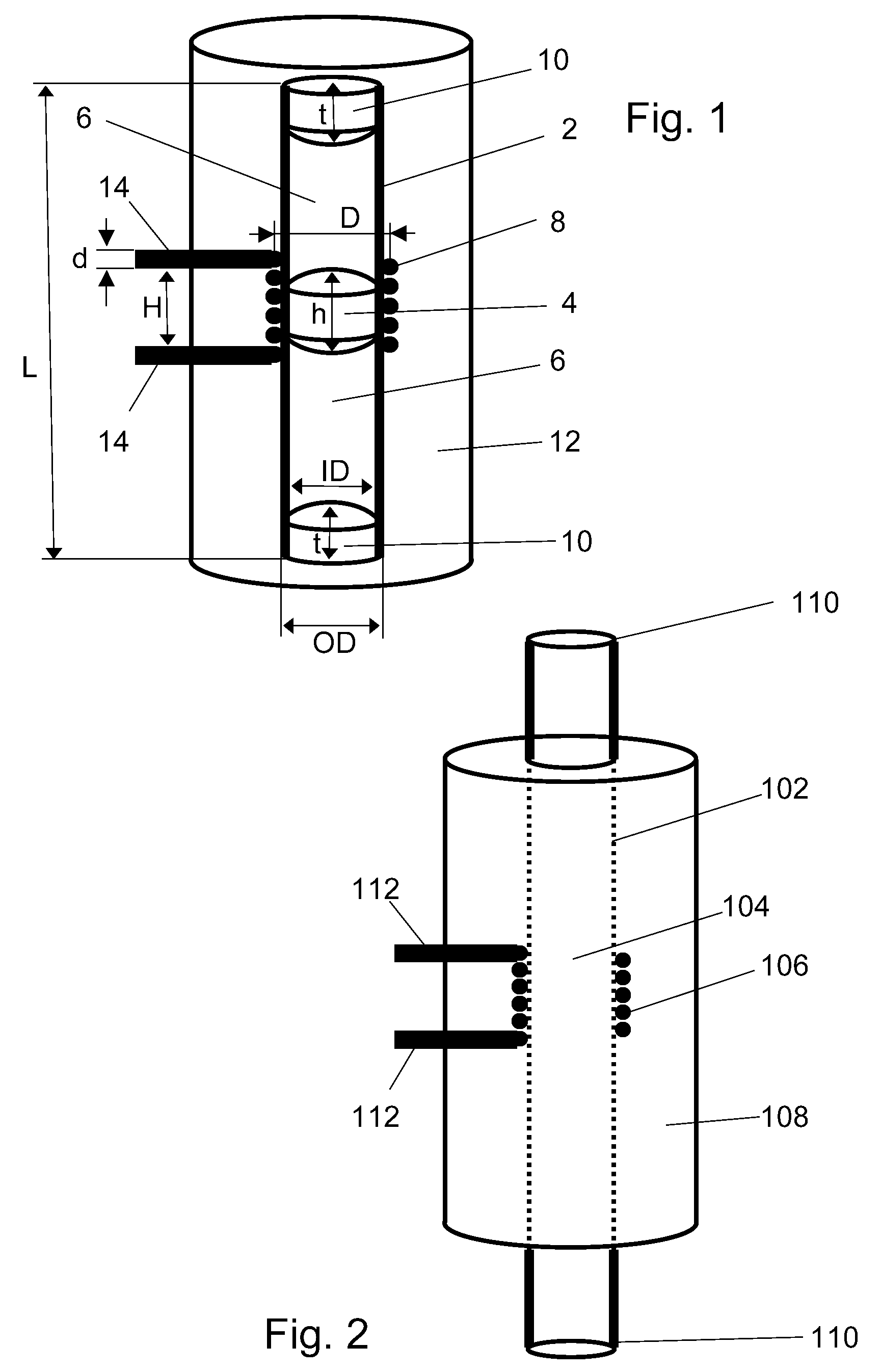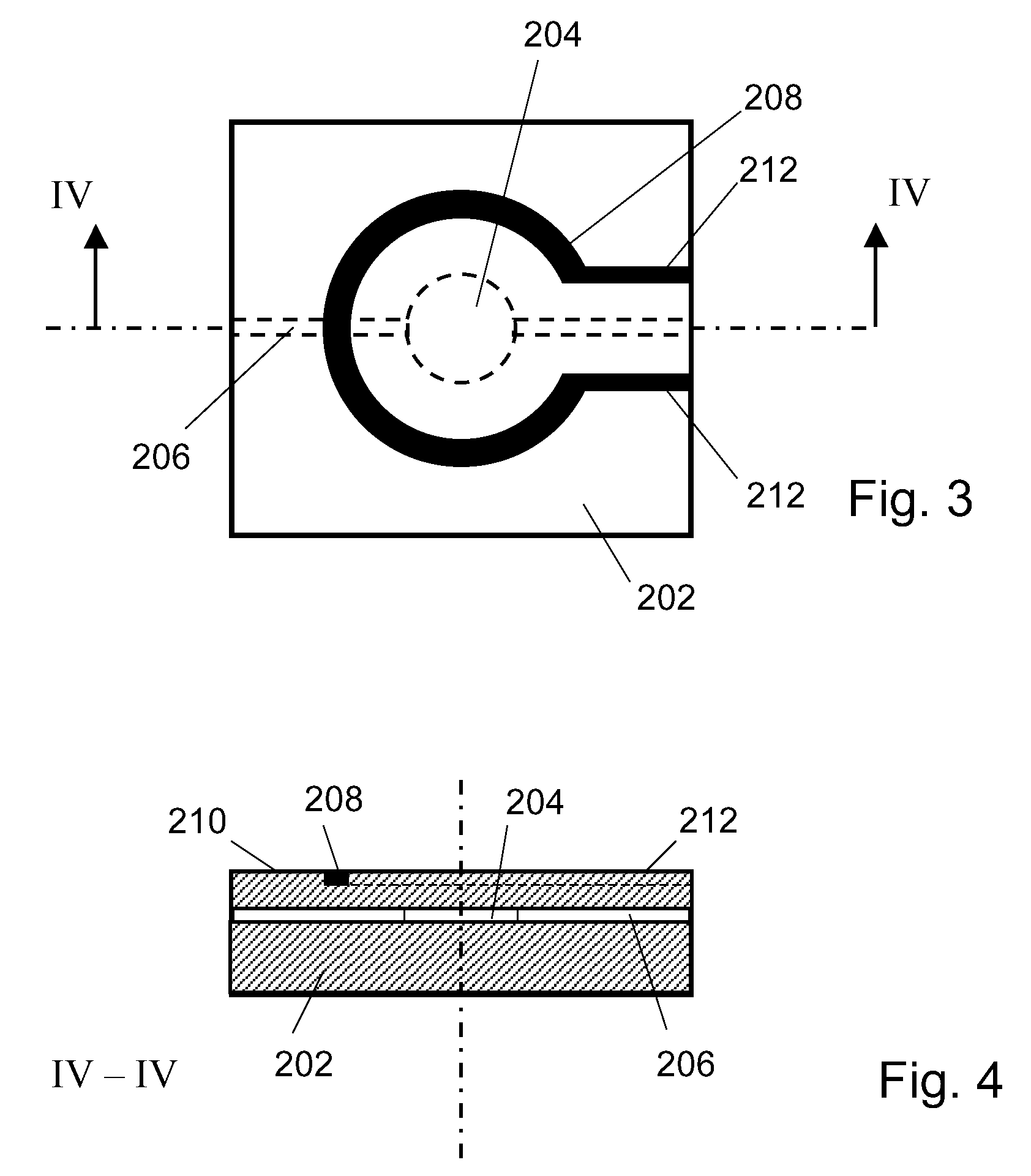Magnetic field probe and method for manufacturing the same
a magnetic field and probe technology, applied in the field of magnetic field probes, can solve the problems of limiting the signal lifetime, affecting so as to improve the accuracy of mr spectroscopy and mr imaging methods.
- Summary
- Abstract
- Description
- Claims
- Application Information
AI Technical Summary
Benefits of technology
Problems solved by technology
Method used
Image
Examples
example 1
Magnetic Field Probe for Nuclear Magnetic Resonance Applications
[0092]This example refers to a magnetic field probe as the one schematically shown in FIG. 1, which is useful as a sensor for detecting local magnetic field intensities. In particular, a plurality of such magnetic field probes may be implemented in a NMR system such as the one described in EP 1 582 886 A1, the contents of which are incorporated herein by reference. It will be understood that such a system is operated with a certain static magnetic field and at a certain RF frequency, henceforth called the operating frequency. It will also be understood that the operating frequency is related to the strength of the static magnetic field and to the type of resonating nucleus.
Manufacturing of Magnetic Field Probes with Solid-State Susceptibility Matching
[0093]The task of the magnetic field probe is to yield strong and long-lived NMR signals from a well-defined position in space. To meet the latter requirement, the sample i...
example 2
Nuclear Magnetic Resonance Probe
[0110]This example refers to a NMR probe as the one schematically shown in FIG. 2. Such probes are useful e.g. for obtaining NMR spectra or NMR intensity data from small liquid samples, as described in Olson D. L. et al., Science; 270 No. 5244 (1995) pp. 1967-1970, the contents of which are incorporated herein by reference. The probe described here includes a jacket whose magnetic susceptibility can be accurately matched to that of the solenoid coil used for signal detection. In this fashion the solenoid is prevented from causing magnetic field distortions in the sample. As a consequence the solenoid can be mounted more closely to the sample, using a sample container with a thinner wall, which leads to significantly enhanced overall sensitivity.
example 3
Nuclear Magnetic Resonance Probe
[0111]This example refers to a NMR probe as the one schematically shown in FIGS. 3 and 4. Such probes are useful e.g. for obtaining NMR spectra or NMR intensity data from small liquid samples, as described in Massin, loc. cit., the contents of which are incorporated herein by reference. It will be understood that the electrically conductive structure shown in FIGS. 3 and 4 as a simple loop may be replaced by other structures, depending on the particular application.
[0112]By virtue of the fact that in the probe described here the magnetic susceptibility of the probe body can be accurately matched to the magnetic susceptibility of the sample contained therein, the main factor limiting the sensitivity of the NMR probe described by Massin, loc. cit. for high-resolution applications has been significantly reduced.
PUM
 Login to View More
Login to View More Abstract
Description
Claims
Application Information
 Login to View More
Login to View More - R&D
- Intellectual Property
- Life Sciences
- Materials
- Tech Scout
- Unparalleled Data Quality
- Higher Quality Content
- 60% Fewer Hallucinations
Browse by: Latest US Patents, China's latest patents, Technical Efficacy Thesaurus, Application Domain, Technology Topic, Popular Technical Reports.
© 2025 PatSnap. All rights reserved.Legal|Privacy policy|Modern Slavery Act Transparency Statement|Sitemap|About US| Contact US: help@patsnap.com



